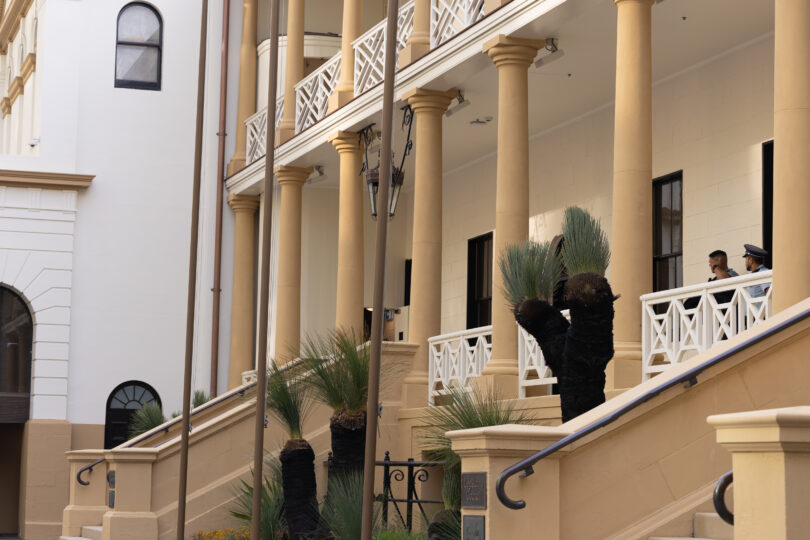NSW Budget 2025-26: A Cautious Path to Surplus Amidst Economic Challenges-Key takeaways
SYDNEY, NSW – June 25, 2025
This article is a summary based on a BusinessNSW circular and edited by Google Gemini AI
The New South Wales Government has unveiled its 2025-26 Budget, painting a cautiously optimistic economic outlook with a projected return to surplus by 2027-28. While inflation has eased and real wages are growing, the Budget addresses significant challenges, including a strained workers’ compensation scheme, rising natural disaster costs, and the need for continued infrastructure investment and skilled workforce development.
Economic Snapshot:
The Budget forecasts a $3.4 billion deficit for 2025-26, aiming for a $1.1 billion surplus by 2027-28. Real Gross State Product (GSP) growth has been revised upwards to 1.75% for 2024-25, with expectations of reaching 2.25% in 2026-27. Unemployment is projected to remain stable, hovering around 4-4.25%. Crucially, the Sydney Consumer Price Index is expected to return to the RBA’s target band of 2-3%, with wage growth slightly outpacing inflation.
However, the state’s gross debt is forecast to stabilise at around 20% of GSP, a significant increase from 6.2% in June 2019. Business confidence remains a concern due to global uncertainty, weak exports, and structural productivity constraints.
Key Concerns and Reforms:
- Workers’ Compensation Reform: A major focus of the Budget is the urgent need for reform in the workers’ compensation scheme, which has seen a $2.6 billion deterioration and a $3.4 billion increase in insurance expenses over five years. Reforms are being progressed to ease the burden on small and medium businesses, with the government emphasizing a need for a sustainable system that supports injured workers and prevents psychological injuries.
- Public Sector Wage Pressures: The removal of the public sector wage cap has led to strong wage growth, placing pressure on future budgets to deliver productivity gains without resorting to tax increases.
- Natural Disaster Costs: Spending on natural disasters has surged over 1000% since 2019-20, with $4.2 billion allocated across the forward estimates for recovery from recent floods and cyclones, adding considerable fiscal strain.
Highlights for Business and Community:
The Budget outlines several key measures and investments aimed at supporting businesses, addressing housing shortages, providing cost-of-living relief, and investing in critical services:
1. Business Policy & Innovation:
- Investment Delivery Authority: $17.7 million to establish an Investment Delivery Authority, designed to accelerate approvals for major projects across various industries, including advanced technologies and energy.
- Innovation Blueprint: $79.2 million to deliver the Innovation Blueprint, aiming to establish NSW as a leading hub for innovation and business scaling.
- ESL Reform: Progress continues on Emergency Services Levy (ESL) reform, with IPART monitoring insurer pricing behavior, a step towards reducing insurance costs for small businesses.
- SafeWork NSW: $262 million to restore the independence and resourcing of SafeWork NSW, focusing on worker protection, including psychosocial hazards.
- Industrial Manslaughter: An additional $6.7 million for prosecuting industrial manslaughter cases.
2. Housing Acceleration:
- Housing Delivery: $83.4 million to accelerate planning approvals for large-scale housing projects, with the Housing Delivery Authority already speeding up approvals for 53,500 homes.
- Construction Trades: $1.2 billion for TAFE training to support home building, including funding to accelerate the delivery of 4,800 construction workers.
- Well-Located Homes: $7.6 million to continue auditing surplus land for suitable housing sites.
- Housing Infrastructure: $20.9 million to support regional councils in bringing forward critical infrastructure for new homes and addressing water issues ($10.1 million).
- Build-to-Rent: Permanent 50% land tax concession on new build-to-rent projects.
3. Cost-of-Living Relief:
- Toll Relief: Continuation of the $60 weekly toll cap, allowing eligible motorists to claim rebates.
- Energy Bill Relief: Extension of the National Energy Bill Relief Fund, providing a $150 rebate to electricity bills for households and eligible small businesses from July 1, 2025.
- Cheaper Home Batteries: From July 1, 2025, households and small businesses may receive around a 30% discount on small-scale battery systems.
- Virtual Power Plant Scheme: Doubling of the current incentive for connecting to a Virtual Power Plant from July 1, 2025.
4. Skills, Innovation, and Workforce Growth:
- Rebuilding TAFE: Significant investment of $325 million to convert TAFE teachers and staff to permanent positions, $380.4 million for campus renewal and maintenance, and $100 million to relocate Bankstown TAFE.
- Fresh Start Program: $51.2 million in 2025-26 for recruiting an additional 1,300 apprentices, trainees, and cadets in NSW Councils.
- Education & Early Learning: $10.4 billion investment in NSW Schools through the Better and Fairer Schools Agreement, and $200.9 million for expanding early education for Aboriginal communities.
- Construction Workforce: $3.4 billion investment in TAFE and Skills to build the workforce needed for housing construction, including 23,000 fee-free apprenticeships and a $13.8 million Construction Workforce Package.
5. Energy & Environment:
- Renewable Energy Zones (REZs): $498.5 million for the Central West Orana REZ and continued investment of $2.1 billion in the Transmission Acceleration Facility to support five REZs across the state.
- Newcastle Logistics Precinct: $115.5 million for a new logistics precinct at the former BHP steelworks site in Newcastle to support renewable energy delivery.
- Natural Disasters: An additional $4.2 billion for disaster relief and recovery, including specific allocations for Tropical Cyclone Alfred and the May 2025 East Coast floods.
- Biodiversity & Water: $472.9 million over four years for biodiversity protections, national parks infrastructure, and water health initiatives, including the Sustainable Diversion Limit Adjustment Mechanism Program.
6. Infrastructure & Transport:
- Cyber Security: $87.7 million to enhance Cyber Security NSW’s work in preventing and responding to cyber incidents.
- Essential Infrastructure Plan: $118.3 billion over four years for state essential infrastructure, including $30 billion in 2025-26 for new buses ($844.3 million), stormwater and recycled water schemes, economic precincts, and screen infrastructure.
- Road Upgrades: $2.4 billion for new and improved Sydney roads, in partnership with the Federal Government, targeting key areas like Fifteenth Avenue, Mona Vale Road West, and Henry Lawson Drive.
- Toll Reform: $58 million to establish and manage the NSW Motorways Entity and continue toll reform.
- Western Sydney Investment: Significant investments in Western Sydney, including $10.8 billion for Sydney Metro West, $5.5 billion for roads, $3.9 billion for schools, and $3.4 billion for health infrastructure.
- Public Transport Improvements: $522.2 million to improve public transport, including new buses and ferry wharf upgrades.
7. Support for Regions:
- Disaster Response: $2.3 billion for road restoration in flood-affected areas and $1.6 billion for other disaster relief programs.
- Environmental Protection: $41.4 million for national park projects to reduce vulnerability to natural disasters.
- Water Security: $319.1 million for the Sustainable Diversion Limit Adjustment Mechanism Program and $255.6 million for the Murray and Murrumbidgee River Constraints Program to improve river health.
- Future Jobs & Investment Authority: $27.3 million to support the economic transition of coal-reliant regions.
- Regional Schools & Hospitals: $2.1 billion package for new and upgraded rural and regional schools, and $220 million for the Wollongong Hospital expansion.
- Farmer & Agribusiness Investment: $45 million for digital technology adoption and on-farm connectivity.
8. Tourism:
- Destination NSW: $135 million for events, promotion, and industry support to boost the state’s visitor economy.
- Office of 24-Hour Economy: $20.6 million to support the night-time economy through regulatory reform, grants, and precinct-based initiatives.
The 2025-26 NSW Budget aims to navigate current economic headwinds while strategically investing in key areas to drive future growth, address critical infrastructure needs, and provide essential support to businesses and households across the state.







